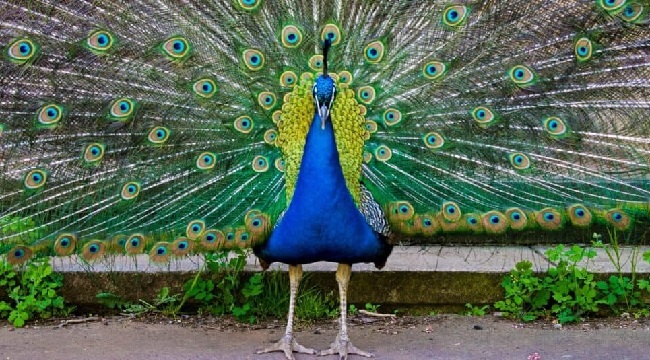Peacocks, the male counterparts of the peafowl species, are renowned for their vibrant plumage and ostentatious display of feathers.
This article will explore the intriguing question, “Where do Peacocks Live in nature?” We’ll shed light on their natural habitats, survival techniques, and geographical distribution, providing an engaging read for bird enthusiasts and nature lovers alike.

Peacocks in Their Natural Habitat
Understanding where Peacocks Live in nature is integral to appreciating these magnificent creatures’ resilience and adaptability. Their habitats range from dense forests to grasslands, depending on the species and geographical location.
Read Also:
Asian Peafowl: Native Inhabitants of the Asian Subcontinent
The most common species, the Indian Peafowl (Pavo cristatus), naturally inhabits South Asia and Southeast Asia. These birds thrive in deciduous forests and near bodies of water. Their habitats range from the lowland forests of Sri Lanka and India to the grasslands of Bangladesh and Nepal.
The Green Peafowl (Pavo muticus), native to Southeast Asia, lives in a variety of habitats from the tropical forests of Java to the savannahs of Myanmar.
Congo Peafowl: The African Outliers
The Congo Peafowl (Afropavo congensis), native to Central Africa, resides in the rainforests of the Democratic Republic of Congo. As the only African member of the peafowl family, they provide an intriguing example of the species’ adaptability.
Peacocks and Human Interaction
Human encroachment and habitat destruction have led some peafowl species to adapt to new environments. It’s not uncommon to see Indian Peafowl roaming agricultural lands or villages where they forage for food.
Conservation of Peafowl Habitats
While Indian Peafowl are of ‘least concern’ according to the IUCN Red List, Green and Congo Peafowl are classified as ‘endangered’ and ‘vulnerable,’ respectively. Conservation efforts aim to protect these birds’ natural habitats and ensure the continuation of these species.
Peacocks: Breeding and Roosting Habits
Here are some breeding and roosting habits of peacocks:
Breeding Season
Peacocks typically have their breeding season during the rainy season. This is the time when their plumage is at its best, and they indulge in courtship displays to attract peahens (the females). The peacock’s display, characterized by the fan-like spread of their long, vibrant tail feathers, and their calls, play a pivotal role in attracting mates.
Roosting Habits
An interesting aspect of peafowl behavior is their roosting habits. These birds are known to roost in trees, which serves the dual purpose of protecting them from ground-based predators and providing them a vantage point to watch for aerial threats.
Peacocks and Their Diet
Peafowl are omnivorous, consuming a wide range of food items. Their diet mainly consists of plants, seeds, and insects, but they’re also known to consume small mammals, reptiles, and amphibians. This diet flexibility is another factor enabling their survival in diverse habitats.
Symbolism and Cultural Significance of Peacocks
Peacocks carry significant cultural and symbolic weight in many societies. In Indian culture, the peacock is the national bird and symbolizes grace, pride, and beauty.
In Greco-Roman mythology, peacocks are associated with Hera (Juno), the queen of the gods. The “eyes” in the tail feathers are considered all-seeing.
The Role of Peacocks in Modern Ecotourism
Peacocks also play an essential role in ecotourism. Their brilliant colors and breathtaking courtship displays make them a must-see for nature enthusiasts and photographers.
Promoting ecotourism can also contribute to peafowl conservation, as it provides economic incentives for locals to protect and maintain peafowl habitats.
In conclusion, the world of peacocks extends far beyond their vibrant plumage. Their survival habits, diet, cultural significance, and the role they play in ecotourism are all intriguing aspects that deepen our understanding of these majestic birds.
It reinforces the importance of preserving their natural habitats to ensure they continue to add beauty and diversity to our planet.
Read Also:
Conclusion
The peacock’s habitat is a testament to their adaptability and resilience in the face of environmental changes and human interference.
From the forests of the Asian subcontinent to the grasslands and villages, peacocks continue to thrive and enthrall with their vibrant display of feathers.
To ensure that future generations continue to witness their beauty, we must prioritize and support efforts to conserve their natural habitats.
Remember, the question, “Where do Peacocks Live?” extends beyond geographical boundaries. It’s a query that delves into ecology, animal behavior, and conservation, making it a fascinating journey into the life of these splendid birds.
























